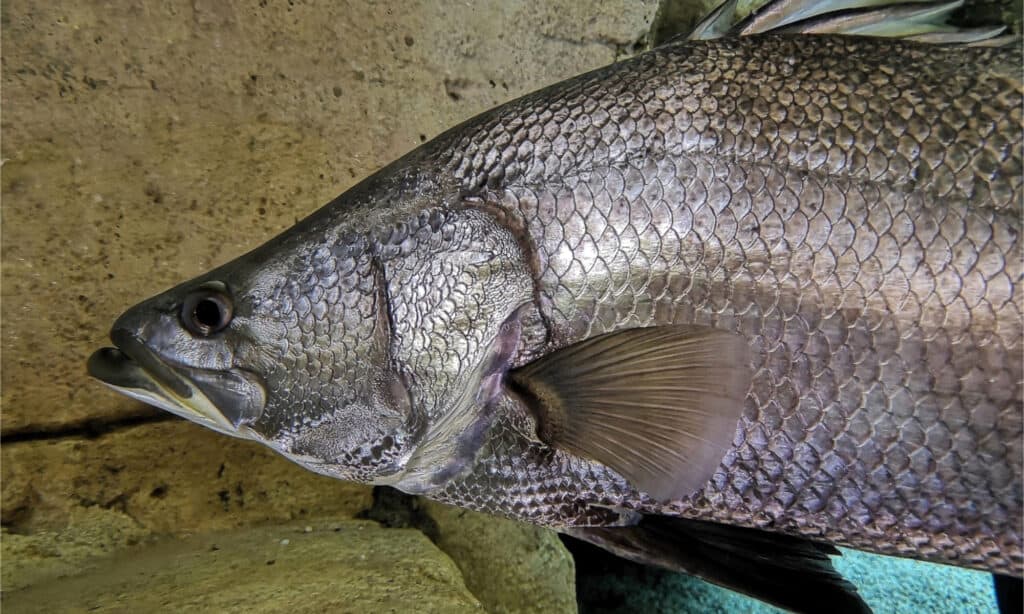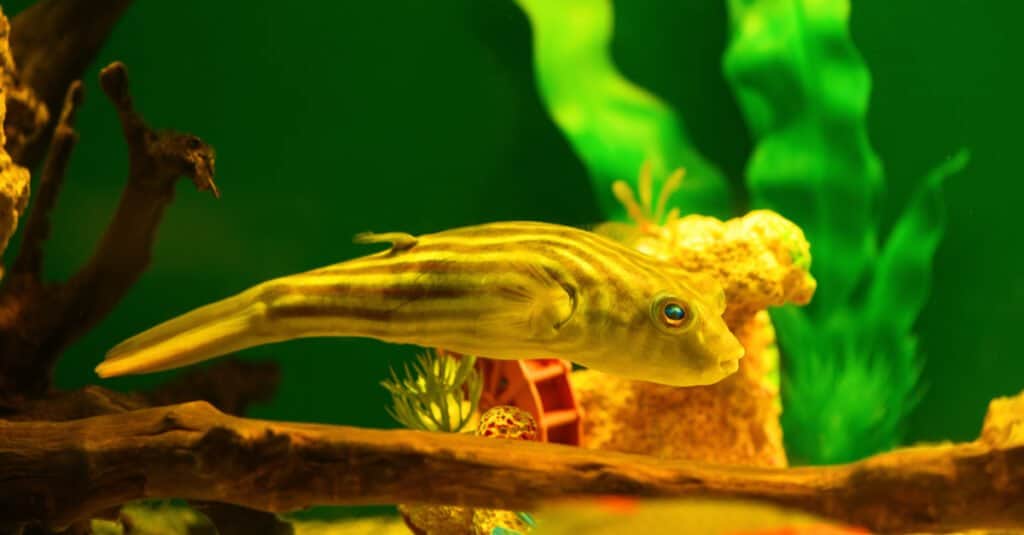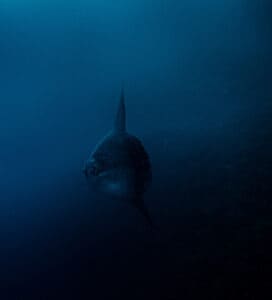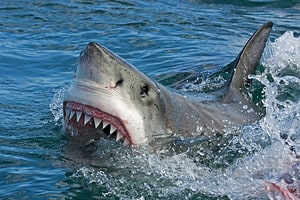Chad is a country in North Central Africa. It has no coastline and borders Libya, Sudan, the Central African Republic, Cameroon, Nigeria, and Niger. So all the fish found in the country live in lakes, ponds, and rivers. The country is known for Lake Chad, the second-largest wetland in Africa. Keep reading to learn more about the amazing fish found in Chad!
1. Nile Perch

The Nile perch is one of the largest freshwater fish in existence.
©Cheng Wei/Shutterstock.com
This fish goes by many other names, including:
- African snook
- Goliath perch
- African barramundi
- Goliath barramundi
- Giant lates
- Victoria perch
- Capitaine (in French-speaking countries)
- Mbuta or mputa (in the Luo language)
- Giwan ruwa (in the Hausa language)
The Nile perch is one of the largest freshwater fish in existence. It can grow up to 7 inches long and weigh over 400 pounds. This fish lives in lakes and inhabits every part where enough oxygen resides. However, the younger members of the species tend to live in shallower waters. They eat other fish, including Nile perch, shellfish, insects, and zooplankton.
While the Nile perch is native to many African lakes, it was introduced in many bodies of water worldwide. It is thus considered one of the 100 worse invasive species, according to the World Conservation Union’s Invasive Species Group. In Queensland, Australia, anyone with a Nile perch risks a steep fine due to how dangerous it would be if the fish got out into a natural water source.
The fish species’ negative effects were first realized when they were purposely introduced into Lake Victoria in Kenya, Tanzania, and Uganda. This introduction caused hundreds of other species to become extinct or nearly extinct. It also disrupted the local economies of communities that relied on the lake for work and food.
2. African Butter Catfish
This fish lives in many different African river systems. It goes by many different names, including:
- Butter fish
- Butter barbel
- Silver barbel
- Silver catfish
- African glass catfish
- Mystus catfish
- Lubangu
This fish grows up to 16 inches long and weighs slightly more than 8 ounces. They have a varied omnivorous diet that includes other fish, insects, shellfish, seeds, leaves, algae, and fruit. The African butter catfish is an important food source wherever it is found in Africa. It is not endangered in many areas of Africa, but in Eastern Africa, it has been overfished and is vulnerable to extinction.
3. Moustache Catfish
The moustache catfish gets its name from the mustache-like barbels on its face. It can grow up to 18 inches and is part of a family of fish called “upside-down catfish.” This is because, in the wild, they swim upside down. However, they usually do not exhibit this behavior when they are in captivity. This explains why their bellies have darker colors (to increase camouflage) and a lighter topside. In captivity, they often stop swimming upside down, and the colors on their body can reverse to a darker topside and lighter underside.
They are also popular fish for aquariums. Be careful when pairing them with other fish for your tank, as they may eat smaller fish!
4. Senegal Trout Barb
This small fish is also known as the Senegal minnow or silverfish. It is found in several freshwater basins in central and western Africa. They can grow to 9.6 inches but are often smaller and are popular fish for aquariums. They are listed as a species of least concern by the Internation Union for Conservation of Nature, meaning their numbers are not in decline. Senegal Trout Barb doesn’t seem threatened by the environment or human activity.
5. Sudan Squeaker
This is another species of “upside-down catfish” that tends to swim belly-up in the wild. These fish grow to 13.5 inches. They tend to grow rapidly in their first year of life. Not much is known about these fish, but they are popular in the fishing community. While they may look different from other members of the “upside-down catfish” family, the species can be differentiated by their number of teeth. Sudan squeakers have between 33 and 48 teeth.
6. Fahaka Pufferfish

The Fahaka Pufferfish can be aggressive with other fish.
©Bk87/Shutterstock.com
This type of fish can inflate part of its body when they feel threatened, like other species of pufferfish. It is an impressive display. They like living in the open, flowing waters and more sheltered areas. These fish can grow to 17 inches, though they are typically smaller in captivity. They require a lot of space in aquariums. It is recommended to keep them in a tank that can hold at least 120 gallons. The tank will need to be even bigger if you plan to keep it with other fish. They can be aggressive with other fish and can bite chunks off of them or even kill them. The other fish they are paired with should also be fast swimmers to avoid being captured by the pufferfish.
7. Giant Squeaker
This fish is also called simply squeaker or giant upside-down catfish. It used to be present in Cairo and the surrounding area but is now extinct from Northern Africa. They can grow to 20 inches long and weigh more than 3 pounds. Like the other examples of “upside-down catfish” species, this type of fish almost always swims upside down. They are an omnivorous species that eat plankton, algae, insects, and shellfish. These catfish are actually venomous. Their spines contain poison that can make wounds painful.
Up Next
- Discover 8 Spectacular Fish Found in Costa Rica
- Discover 7 Spectacular Fish Found in Chile
- Watch Fisherman Lose Their Minds as 600LB Mako Shark Performs Nine Flip Encore
- 10 Spectacular Mountains In Kentucky
The photo featured at the top of this post is © Bk87/Shutterstock.com
Sources
- Wikipedia, Available here: https://en.wikipedia.org/wiki/Nile_perch
- Wikipedia, Available here: https://en.wikipedia.org/wiki/African_butter_catfish
- Wikipedia, Available here: https://en.wikipedia.org/wiki/Synodontis_membranaceus
- Wikipedia, Available here: https://en.wikipedia.org/wiki/Raiamas_senegalensis
- Wikipedia, Available here: https://en.wikipedia.org/wiki/Synodontis_frontosus
- Scotcat, Available here: https://www.scotcat.com/factsheets/sciades_herzbergii.htm
- Wikipedia, Available here: https://en.wikipedia.org/wiki/Synodontis_batensoda
FAQs (Frequently Asked Questions)
What are some fish species found in Chad?
Fish species found in Chad include the Nile perch, the African butter catfish, and the moustache catfish.
What is the second largest wetland in Africa?
Lake Chad is the second-largest wetland in Africa.
Do any fish species swim upside-down?
Yes, members of the upside-down catfish family swim upside down in the wild. In captivity, some species may swim right-side up.
Thank you for reading! Have some feedback for us? Contact the AZ Animals editorial team.






